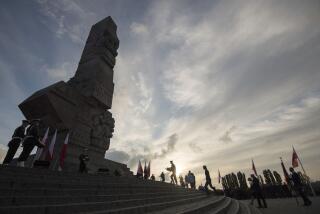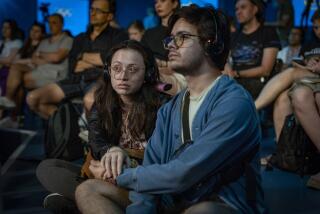Sochi Winter Games: Amid Olympic venues, a cemetery rests in peace
- Share via
SOCHI, Russia — Thousands of fans were streaming into Olympic Park at noon, funneling through the main gate toward a central plaza where the torch burns.
Phil Wong moved with the crowd on his way to a curling match. The Canadian tourist passed a cluster of evergreens, clueless as to what lay on the other side.
“A real cemetery?” he said. “Oh, that’s creepy.”
FRAMEWORK: Best images from Sochi
It could be the quirkiest thing about the Sochi Games, this tiny graveyard, a patch of dirt and tangled grass at the center of an ultra-modern sports complex.
It could also be a welcome novelty, a taste of local culture amid the concrete and steel of four new arenas and a domed stadium. But the Russians have done their best to keep it a secret.
Large maps positioned throughout the park — listing every venue, snack bar and restroom — show the burial ground as merely a green blotch with no identifying marks.
Even if you know its location, officials have tied heavy fabric to the wrought-iron fence and planted young trees in a tight ring around the outside.
Volunteers in their brightly colored uniforms appeared confused when asked about getting inside.
“Cemetery?” one of them responded. “I don’t know.”
It seems odd that the site has slipped into anonymity, given the news it generated in the seven years since Sochi was awarded these Games.
To make room for their coastal complex — built from scratch — officials seized thousands of acres of state-run farmland southeast of the city, razing homes and displacing residents who had lived in the region for generations.
Many of the locals were descendants of the Old Believers, a purist sect that separated from the Russian Orthodox Church and was largely driven from Russia in the 1600s. Czar Nicholas II eventually invited them back in the early 1900s.
“The first colony of them settled here on the coast of the Black Sea, coming from Turkey,” said Dmitry Drofichev, a local history teacher and community leader.
The Old Believers staged protests and, in a settlement with city officials, agreed to relocate to a nearby village so long as their cemetery, with more than 100 graves, stayed in place.
“The authorities displayed reason and respect for our feelings,” Drofichev says. “I don’t think a piece of the country’s and the people’s history, which the cemetery is, can really bother athletes and visitors of the Games.”
Especially if they don’t know it’s there.
On a recent afternoon, a woman who identified herself as a Sochi resident sat on a bench with a view of the torch and the elegant medals plaza. She seemed surprised to hear about the graves immediately behind her, on the other side of those pines, but was not disturbed by their presence.
“People have to be buried somewhere,” she said, declining to give her name. “So what?”
A half-dozen soldiers in pale blue camouflage stood nearby at an unmarked entrance to the property, just across from the national Olympic houses for the U.S. and Canadian teams.
They leaned against barricades, talking and fiddling with their cellphones. When a stranger approached, asking to enter, the largest soldier raised both hands and uttered a single word.
“No.”
The only way to see over the fence was to climb the exterior stairs of an adjacent broadcast center.
From above, the cemetery appeared careworn with clusters of graves surrounded by weeds and sagging fences. Simple patriarchal crosses stood beside elaborate marble headstones.
According to local government records, the Old Believers continued to conduct burials here throughout much of the construction process.
“Our people can still visit,” Drofichev said. “I guess we would get permission to go ahead with a funeral ceremony but either late at night or early in the morning.”
Olympic officials originally talked about keeping the site open during the Games. There were no pines, no screens on the fencing, when reporters visited for a preview in late 2012.
Plans changed at some point after that, perhaps because the government worried the cemetery might serve as a daily reminder that homes had been cleared away.
Asked for comment, the local Olympic organizing committee responded with a one-paragraph statement expressing its appreciation for “the many traditions and cultures of those living in Sochi.”
Numerous calls and emails to a city administrator went unanswered.
At an information booth between Adler Arena and the Iceberg Skating Palace, a woman behind the desk was asked about getting inside the manned gate.
“The cemetery,” she said. “Let me give you a map.”
But then she paused, whispering in Russian to her colleagues, who began to laugh. Another woman stepped forward to say that only staff members were allowed in certain locations.
So the graveyard lay empty on a recent morning, the only sign of life a black-winged bird flitting between the trees.
And, as the Games neared their conclusion on Sunday, daily crowds continued to stroll past, seemingly oblivious to the curio in their midst.
Twitter: @latimeswharton
Times staff writer Sergei L. Loiko contributed to this report.
More to Read
Go beyond the scoreboard
Get the latest on L.A.'s teams in the daily Sports Report newsletter.
You may occasionally receive promotional content from the Los Angeles Times.







